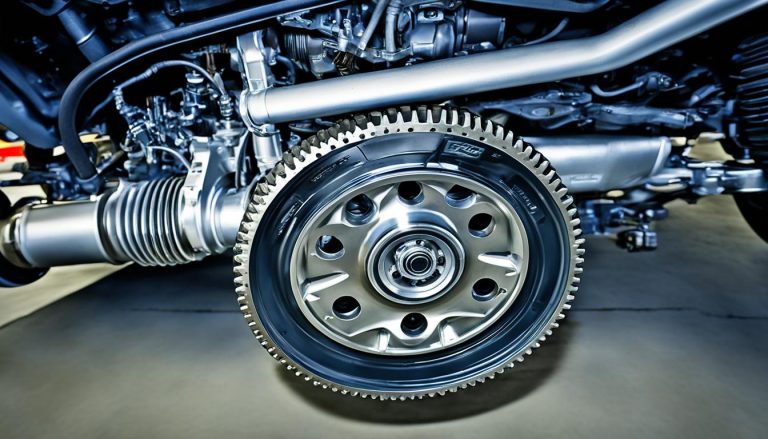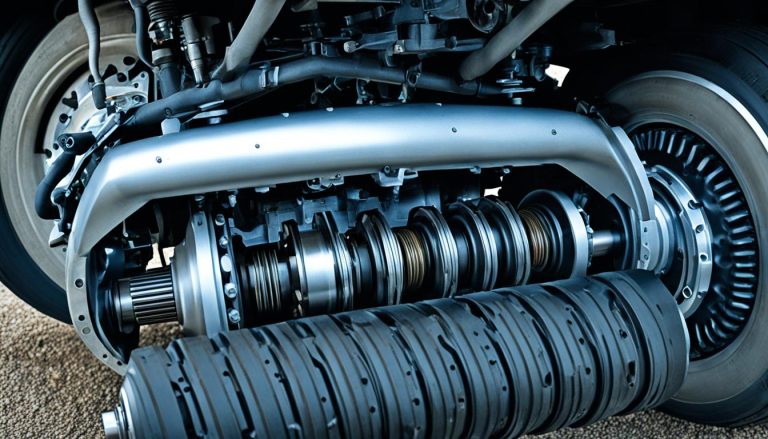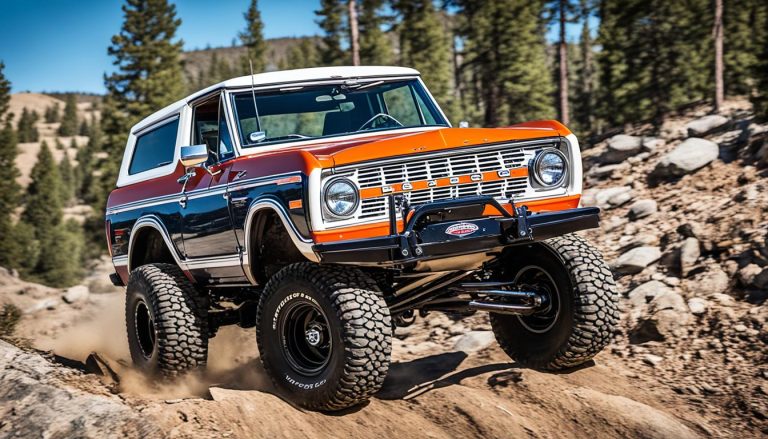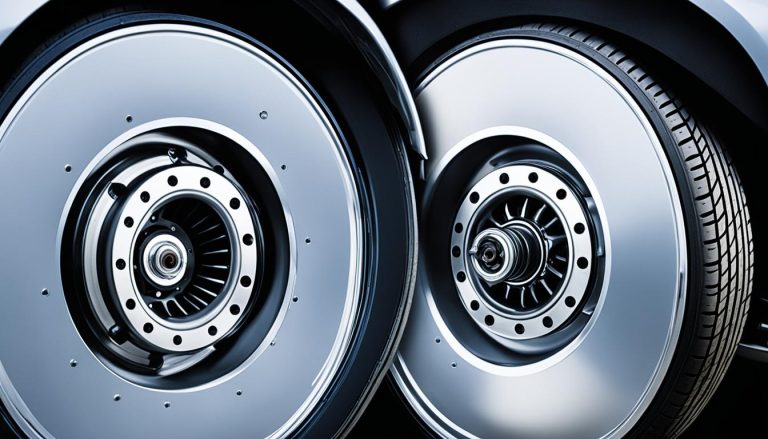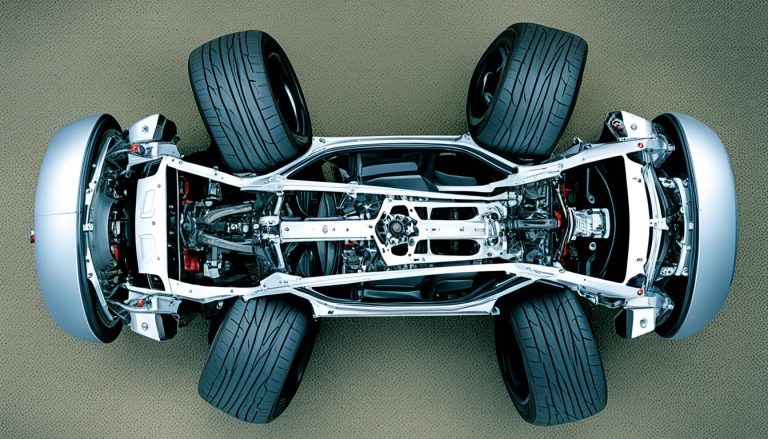Is Your Rear End Limited Slip? Find Out Now!
Ever wondered how your car manages to grip the road during a sharp corner or how it doesn’t lose traction on slippery surfaces? It could very well be thanks to a limited slip differential. This piece of mechanical ingenuity resides in your vehicle’s rear end differential, making a significant difference in your driving experience. But the question remains, how do you go about diagnosing a limited slip differential without getting your hands dirty? It’s not as complex as you might think, and you’re about to learn how.
If you’re under the hood trying to figure out whether you’ve got an LSD equipped in your car, you know that clarity is key. For instance, with Toyota vehicles, you might only find a vague “with” or “without” notation when it comes to the LSD on your documentation. This lack of detail can be frustrating, especially when you’re prepping for maintenance tasks such as oil changes where the type of differential can dictate what products you use. Back in the day, Toyota added an LSD sticker to the differential housing – a handy visual aid. Still, given enough time, stickers fade or get removed, leaving you in the dark once more.
Key Takeaways
- Understanding whether your car has a limited slip differential is crucial for optimal performance.
- Vehicle documentation sometimes lacks detailed information regarding the type of differential, making self-diagnosis necessary.
- Historical identifiers, such as stickers on differential housing, may no longer be reliable due to wear or removal.
- Kickstarting your knowledge on rear end differentials can guide you in proper vehicle maintenance and product selection.
- By the end of this guide, you’ll have all the necessary tools for diagnosing a limited slip differential without needing to take apart your car.
What is a Limited Slip Differential?
Have you ever wondered how to tell if your rear end is limited slip, or why this feature might be significant for your vehicle’s performance? The answer lies in the unique functioning of the limited slip differential.
The Mechanics Behind Limited Slip Differentials
A limited slip differential (LSD) is ingeniously designed to enhance traction by evenly distributing power to both wheels of a vehicle, which is particularly crucial when one wheel is either airborne or traversing a low-traction surface like ice or mud. Unlike a standard differential, which sends power to the wheel with the least resistance, an LSD adapts to changing conditions to maintain stable and consistent drive power.
Comparing Standard and Limited Slip Differentials
Understanding the standard vs limited slip differential can clarify why an LSD might be the preferred choice for performance or off-road vehicles. Let’s take a closer look through a comparative lens:
| Feature | Standard Differential | Limited Slip Differential |
|---|---|---|
| Power Distribution | Sends power to the wheel with least resistance | Distributes power to both wheels evenly |
| Traction | Can struggle on uneven surfaces | Improves traction on diverse terrains |
| Vehicle Performance | Standard handling and cornering | Enhanced handling and cornering in poor conditions |
| Usage | Common in regular passenger vehicles | Favored in performance, off-road, and commercial vehicles |
Impact of Limited Slip Differentials on Vehicle Performance
The presence of an LSD can significantly impact vehicle performance, offering a steadfast grip difference that benefits you in varied driving conditions. Vehicles equipped with an LSD are known to exhibit superior handling, especially in scenarios with disparities in wheel grip, such as driving through mud, snow, or even during high-performance racing situations.
It’s not just about knowing how to tell if your rear end is limited slip—it’s about understanding how that affects the way you drive and the control you have on the road. Mastering the intricacies of your vehicle’s rear end could be the key that unlocks its true potential, offering you not just a ride, but an experience.
How to Tell If Your Rear End is Limited Slip
Identifying whether your vehicle is equipped with a limited slip differential (LSD) is an important step in understanding how it will perform in various driving conditions. Checking your vehicle’s differential type is simplistically informative and can be done with basic tools. Here’s a straightforward method for testing your limited slip differential without professional help.
- Elevate the Rear of Your Vehicle: Safely jack up the rear end so that both wheels are off the ground. Ensure the vehicle is stable before proceeding.
- Handbrake and Gear: Release the handbrake and place your vehicle out of gear.
- Spin the Wheel: Manually spin one of the rear wheels. Be attentive to the direction of rotation.
If the opposite wheel rotates in the same direction, this is a tell-tale sign of the present and functioning LSD. Conversely, if the opposite wheel spins in the opposite direction, it’s indicative of an open differential.
| Wheel Spun | Opposite Wheel Direction | Differential Type |
|---|---|---|
| Clockwise (CW) | Clockwise (CW) | Limited Slip Differential (LSD) |
| Clockwise (CW) | Counter-Clockwise (CCW) | Open Differential |
| Counter-Clockwise (CCW) | Counter-Clockwise (CCW) | Limited Slip Differential (LSD) |
| Counter-Clockwise (CCW) | Clockwise (CW) | Open Differential |
While this test is effective for most rear-wheel-drive vehicles, there are variations among different models and manufacturers. Always consult your user manual or a trusted mechanic if you are unsure. Regular maintenance and identifying the type of limited slip differential ensures optimized performance and can prevent future mechanical issues.
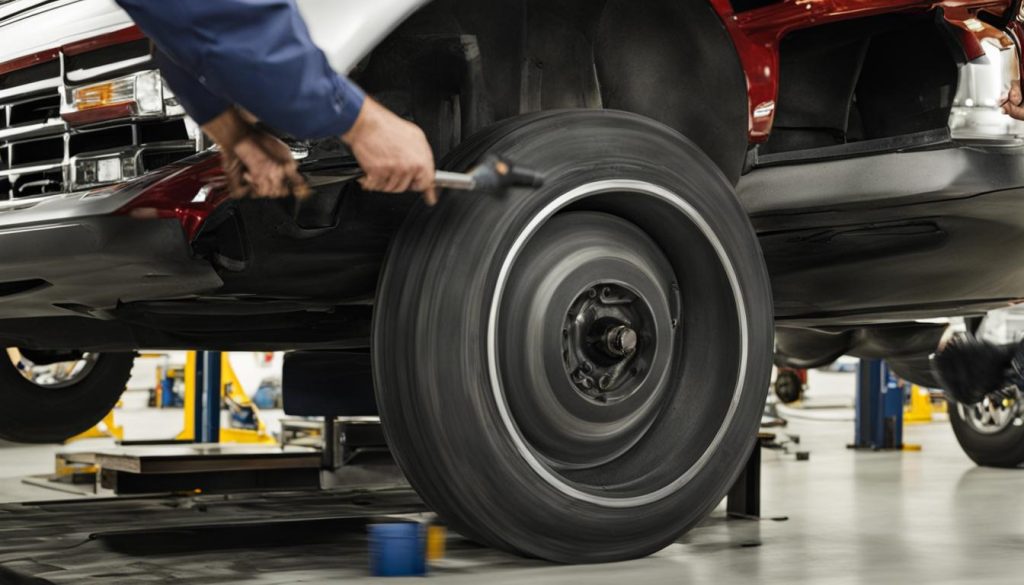
Signs of a Limited Slip Differential
Uncovering whether your vehicle is equipped with a limited slip differential (LSD) involves a few detective-like inspection methods. Certain characteristics of your car’s performance, as well as visual identifiers, are telltale signs of limited slip differential technology working underneath your vehicle. Recognizing these signs not only enhances your understanding of your vehicle’s mechanics but can also aid in maintaining proper performance.
Visual Inspection Tips for Identifying Limited Slip Differentials
Embarking on a visual quest can yield clues about your differential. For instance, Ford F-250 models may feature a clear indicator in the form of a tag on the rear differential cover. Usually, this metal badge contains an array of letters and numbers which can be interpreted to determine the presence of an LSD. But fret not if you’re faced with an inconspicuous differential; there are other ways to uncover its secrets.
Understanding Axle Tag Codes
Axle tag identification is like unlocking a coded message—each symbol and number holds specific information regarding your vehicle’s rear axle assembly. Often found in the door jamb, an axle code combining a letter and a number typically signifies an LSD. Conversely, a pair of numbers without letters alerts you to the presence of an open differential, which behaves differently under varying traction conditions.
Behavioral Indicators on the Road
Observing your vehicle’s behavior on the road can also serve as a practical way of determining limited slip differential engagement. A simple, though somewhat messy test involves positioning one tire on a low-traction surface, such as mud, while the other remains on solid pavement. If your vehicle powers through with both wheels spinning actively, it’s a strong indication that you’re benefiting from a limited slip differential, ensuring you sustain momentum where an open differential would falter.
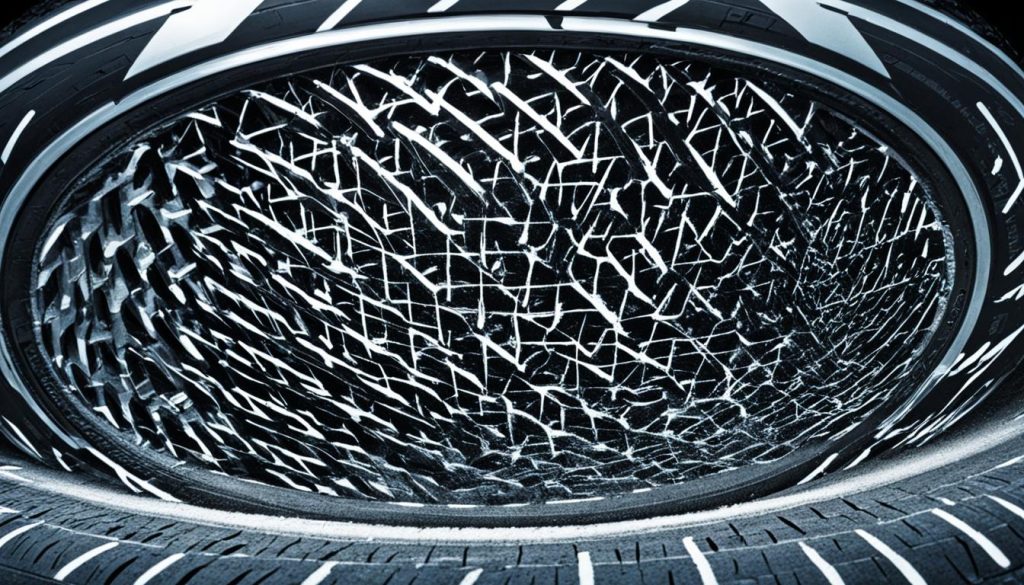
Checking Your Vehicle’s Differential
Whether you’re a weekend warrior looking to optimize your vehicle’s performance off-road, or simply keen on understanding the full capabilities of your car’s drivetrain, knowing how to tell if your rear end is limited slip is invaluable. In this section, we dive into the most reliable strategies to identify the type of differential your vehicle sports without needing to get under the car with a wrench in hand.
Consult Your Dealership or Use Your VIN
If precision is what you’re after, your dealership is the go-to source for this information. By using your Vehicle Identification Number (VIN), a dealership can provide you with a comprehensive breakdown of all your vehicle’s specs, including whether or not your car has a limited slip differential. This saves you the time and uncertainty involved with more manual methods. Consulting a dealership for differential type ensures that you get accurate and dependable data straight from your car’s manufacturer.
DIY Differential Testing Techniques
For those who prefer a hands-on approach, several DIY limited slip differential tests can be conducted. The wheel spin test, previously described, can be a quick indicator. Additionally, pay close attention to the axle code – different manufacturers use different nomenclature, but for many, a ‘3L55’ would suggest a 3.55 ratio limited slip differential, while a ‘355’ might indicate a conventional, non-LSD setup. Similarly, codes like ‘B6’ can denote an LSD variant. Understanding these subtleties can empower you to make informed decisions about the care and potential upgrades for your vehicle’s performance.
FAQ
What is a Limited Slip Differential?
A limited slip differential (LSD) is a type of rear end differential designed to distribute power to both wheels of a vehicle, even when one has less traction. This system provides better handling and traction under various road conditions compared to a standard or open differential, which channels power primarily to the wheel with the least resistance.
How can I tell if my vehicle’s rear end is limited slip without disassembling it?
There are a few ways to check if you have a limited slip differential without taking your vehicle apart. One is to look for certain indicators on your vehicle, such as an LSD sticker, an axle tag with specific codes, or information in your door jamb. A physical test involves jacking up the rear end, spinning one wheel, and noting the direction the other wheel spins. Additionally, some driving tests, like the one-wheel-on-mud test, could also hint at an LSD if both wheels spin together.
What are the mechanics behind Limited Slip Differentials?
Limited slip differentials use gears or clutches to control the power sent to each wheel. The LSD engages when there’s a significant difference in wheel spin speeds – like when one tire is on a slippery surface. The mechanism will redistribute torque to the wheel with more grip to ensure both wheels are turning and providing traction.
How do standard and limited slip differentials compare?
The key difference between standard and limited slip differentials is how they manage traction. A standard differential, also known as an open differential, allows each wheel to rotate at different speeds, which is beneficial for turning but can reduce traction under certain conditions. A limited slip differential, however, is designed to limit the speed difference between the two driving wheels to provide better traction on uneven surfaces.
What is the impact of a limited slip differential on vehicle performance?
Having a limited slip differential can greatly enhance vehicle performance, particularly in conditions where grip varies between the two rear wheels. It ensures that power is always available to the wheel with more traction, improving acceleration and stability, especially in wet, icy, or off-road situations.
What are some visual inspection tips for identifying limited slip differentials?
When conducting a visual inspection, check for an LSD sticker on the differential housing, similar to what Toyota vehicles might have had in the past. Additionally, inspect the rear differential cover for tags or engravings that could indicate an LSD, such as a letter followed by a number. Check the door jamb for an axle code, where specific letter and number combinations can hint at the presence of an LSD.
How do I understand axle tag codes when determining if I have a limited slip differential?
Axle tag codes are often found on a tag attached to the rear differential cover or in the door jamb. These codes consist of letters and numbers that correspond to specific differential types. For instance, a code like “3L55” often indicates a 3.55 ratio limited slip differential, whereas a code like “3 55” would signify a standard differential. Understanding the significance of each digit and letter in this code is critical for proper identification.
What are some behavioral indicators on the road that my vehicle has a limited slip differential?
Behavioral indicators include consistent traction when accelerating in a straight line even on uneven surfaces, improved handling during sharp turns under acceleration, and the ability to maintain momentum through patches of low traction without one wheel spinning aimlessly. If you notice your vehicle performing well in these conditions, it might have an LSD.
How should I consult my dealership or use my VIN to check my vehicle’s differential type?
If you want a definitive answer about your vehicle’s differential type, you can consult a dealership. Provide them with your Vehicle Identification Number (VIN), and they can access manufacturing data to tell you if your vehicle came factory-equipped with a limited slip differential. This information can be vital for maintenance or upgrade purposes.
Can you give me some DIY differential testing techniques?
One common DIY testing technique involves jacking up the rear of the vehicle, securing it safely on stands, releasing the handbrake, and manually spinning one of the rear wheels. If the other wheel spins in the same direction, this usually indicates an LSD. If it spins in the opposite direction, you likely have an open differential. Remember to observe safety precautions whenever you’re working under your vehicle.


